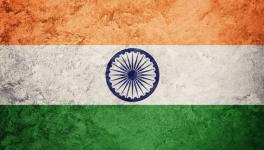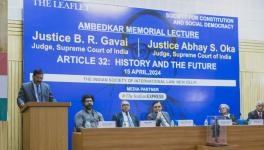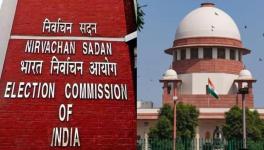Why Have Court Proceedings Not Been Live-streamed Despite Supreme Court Ruling?
While online hearings have become the norm in COVID-19 times, the same does not always fulfill the principle of open justice. SRI HARSHA KANDUKURI writes on the need for implementing live casting and the cautions that the rules must follow in doing so.
It has been two years since the Supreme Court of India ruled in favour of the live telecasting of its proceedings in the case of Swapnil Tripathi v. Secretary-General, Supreme Court.
On September 26, 2018, the bench comprising Chief Justice Dipak Mishra, Justice A M Khanwilkar and Justice D Y Chandrachud held the live telecast of court proceedings as part of the right to access justice under Article 21 of the Constitution of India.
The litigation started with a law student who challenged the Supreme Court notice that barred law students and interns from entering courts on miscellaneous days. The petition prayed for striking down the said notice as unconstitutional. In the alternative, it sought to allow live telecasting of court proceedings.
Later, Senior Advocate Indira Jaising, Advocate Mathews Nedumpara, Centre for Accountability and Systematic Change, and others joined the litigation praying for the court’s proceedings to be broadcasted.
The Supreme Court generally agreed with the Comprehensive Guidelines submitted by the Attorney General for India on live telecasting of the proceedings.
If the administrative arm of the Court does not act on its very own judgement, it shows the court in a very bad light.
The Court also observed that the rules should specify cases that should not be telecasted owing to privacy and other concerns. Thus they must formulate the modalities for requesting and objecting to live telecasts, the way the proceedings should be filmed, the reasonable delay of live, and so on.
The court also opined that cases of constitutional and national importance can be live streamed in a pilot project. Live telecasting facilities should be made available for visitors of the Court and facilities like the media room should be created and TVs should be arranged in the Bar rooms.
Delay by Supreme Court’s administration
It is a matter of concern that the Supreme Court of India did not implement the judgement even after two years since the ruling.
The majority judgement delivered by Justice Khanwilkar observes that the implementation of live streaming must be “executed in phases” and “that the Supreme Court Rules, 2013 will have to be suitably amended to provide for the regulatory framework.” But the Supreme Court Rules of 2013 are not amended yet to this effect.
Many have moved the Court to implement its decision of 2018.
Some have pleaded to live telecast individual cases, the latest instance being the case of Sudharshan TV. Earlier, K N Govindacharya had also prayed for the live telecast of Ram Mandir case.
Senior Advocate Indira Jaising filed an application seeking the implementation of the 2018 judgement. During the hearings, Additional Solicitor General Madhavi Diwan appearing for the Secretary-General of the Apex Court informed the bench that the process of implementing the 2018 verdict had already started.
In the absence of official transcripts maintained by the Court, the live transmission serves as a record of oral proceedings.
On February 4, the Bench comprising Justices Arun Mishra, Vineet Saran, and M R Shah dismissed the plea stating that the action has to be taken on the administrative side of the Court and there is nothing to be done on the judicial side. It ordered the Secretary-General to place the matter before the Chief Justice on the administrative side. The order of the court was as follows.
“No order on the judicial side is required. The matter is such which has to be considered and dealt with on the administrative side. Let the Secretary-General, Supreme Court of India, place the matter, on the administrative side, before Hon’ble the Chief Justice of India.”
We often see the Court asking Governments to frame the rules under a particular statute or seeking explanations as to why its judgements or directions were being not implemented.
If the administrative arm of the Court does not act on its very own judgement, it shows the court in a very bad light.
Why is the live-telecast of court proceedings important?
As pointed out in the judgement, the Supreme Court is the Court of record and its “acts and proceedings are enrolled for perpetual memory and testimony.” In the absence of official transcripts maintained by the Court, the live transmission serves as a record of oral proceedings.
The live telecast of the Court’s proceedings is connected to the right to know, right to freedom of speech and expression, and the principle of open court.
But we must remember that oral proceedings are not exhaustive for keeping a watch on the working of the Supreme Court.
One may accept that two years might not be sufficient for the implementation of the entire project. But even the pilot project or phases or sub-phases of live telecast projects have not been carried out.
It is important to note that the Government of India (Department of Justice) is extending all the technical and financial support required and there is no shortcoming from the treasury benches.
Indeed, it is impermissible, as a vigilant republic, not to raise concerns about non-implementation of the judgement. But we must remember that oral proceedings are not exhaustive for keeping a watch on the working of the Supreme Court.
As Professor Arun Thiruvengadam argued, there is a need for ‘more fundamental reforms’ than just the live streaming of proceedings. Giving more importance to the written arguments (briefs and affidavits) and using the oral proceedings just for clarifications or for complex arguments is certainly one among them.
By and large, Indian judgements do not refer extensively to the briefs or affidavits. It has become a horrendous task for the researchers and academicians to verify if a particular precedent was brought to the court’s notice or if a particular line of argument was adopted and if the court considered or ignored them.
While framing the rules on the live telecasting of the Court’s proceedings, the Court should be mindful of the possible grand-standing and playing to the galleries by the advocates.
Researchers or academicians should not be left with the only option of relying on live-tweeting or reports filed by the journalists to ascertain whether a particular precedent or line of argument was considered by the court.
It is possible that the court does not record all the submissions made before it. For instance, recently we saw the Supreme Court revising its order to record the presence of the Attorney General for India in Bhushan’s contempt case.
Live telecasting of the proceedings will help to an extent. Yet, written arguments or the briefs, wherever possible, should be made available by the registry on the Court’s website. This should not be a problem especially when e-filing has become the norm of the day.
While framing the rules on the live telecasting of the Court’s proceedings, the Court should be mindful of the possible grand-standing and playing to the galleries by the advocates.
Research indicates that the live telecasting of the Parliament proceedings has in fact increased grand-standing and might lead to disruptions in the House.
As acknowledged by the Swapnil Tripathi judgement, the rules should ensure that the advocates should strictly adhere to the time frame provided by the Court.
In June, the Delhi High Court issued a circular allowing the public to witness its virtual Court proceedings. The people who want to access court proceedings online have to contact the concerned Court Master the previous day.
The Bombay High Court has allowed for live streaming of its proceedings.
The Kerala High Court also live-streamed its proceedings and “any person could have watched the proceedings live through the ‘Zoom’ app.”
While the Supreme Court is also hearing cases online, it may provide the link to the hearings on its website.
There is no denying that right from ordinary citizens to lawyers, legal journalists, academicians, and law students are waiting for the live telecasting of the Court’s proceedings.
The need is more felt especially in the times of COVID-19 when journalists have requested the Chief Justice for access to court proceedings, for the principle of ‘open court’ is not in place otherwise.
It is time for the Supreme Court to implement its order and make access to justice a reality.
The article was originally published in The Leaflet.
(Sri Harsha Kandukuri is a post graduate from Azim Premji University. Views are personal.)
Get the latest reports & analysis with people's perspective on Protests, movements & deep analytical videos, discussions of the current affairs in your Telegram app. Subscribe to NewsClick's Telegram channel & get Real-Time updates on stories, as they get published on our website.
























